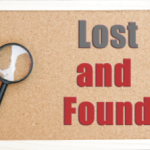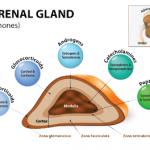Finding Truths
Books written and co-authored by Dr. Matteson have been published by the Mayo Clinic and other publishers and distributed to university libraries at medical schools throughout the country.
His first book, Polyarteritis Nodosa, was published in 1996 and covered the history of the disease. His research piqued his interest in Adolf Kussmaul, a prominent German physician of the 1800s who made great contributions to rheumatology, specifically in the recognition of polyarteritis nodosa. This abiding interest eventually led Dr. Matteson to write—with the late Frederick Kluge, MD, a German physician—a biography of Dr. Kussmaul.
Dr. Matteson’s second book, however, was A History of Idiopathic Vasculitis, published in 1999. While researching the disease, he discovered the first descriptions of a form of large vessel vasculitis, now called Takayasu arteritis, had been published in the 19th century and that aortitis had been described as early as the 16th century. The first two cases of microscopic polyangiitis were reported in 1923 by a German Jewish physician, Friedrich Wohlwill, who was forced to flee Nazi Germany in 1933.
Interested not only in diseases, but also in the lives and times of other physicians, Dr. Matteson and his colleague, Alexander Woywodt, MD, traced the origin of granulomatosis with polyangiitis, initially named after Friedrich Wegener, a Nazi physician. They found the disease had been described earlier by another German physician, Fritz Klinger. Following their five-year-long investigation and published articles on the topic, the disease was renamed in 2010.
Another book, titled Behçet’s Disease, includes accounts of this disease translated from French and German into English, noting the condition had been described well before Behçet’s own publication.
His next book, co-authored with Wolfgang Keitel, MD, in translation to English, focused on Max Hirsch, a German Jewish physician and scientist who co-founded the German Society of Rheumatology and was a leading figure in the founding of the International League of Associations for Rheumatology. Dr. Matteson says Dr. Hirsch disappeared during the Holocaust.
“By tracking down his descendants, a picture of what happened to him emerged,” says Dr. Matteson, adding that Dr. Hirsch, along with his wife and one of his sons, was murdered in a mass execution outside Riga, Latvia, in 1942. “All references to him were eradicated by the Nazis, so he was lost to history until we were able to discover his story. This was a very intense piece of research and work.”
Dr. Matteson’s most recent book, co-authored with Gene Hunder, MD, focuses on the history of rheumatology at the Mayo Clinic. He says his next book will focus on the contributions of Canadian physician William Osler to rheumatology and describe the evolution of his thoughts as influenced by his visits to German and Austrian medical centers in the 19th century. Among other things, Osler is known as one of the founding professors of Johns Hopkins Hospital and was a key figure in the development of modern medical education and training.
“The history of medicine and rheumatology teaches us lessons about how our discipline developed and how people described the diseases early on,” says Dr. Matteson. “I hope these books will help rheumatologists better understand the history behind rheumatologic diseases and enhance patient care.”



